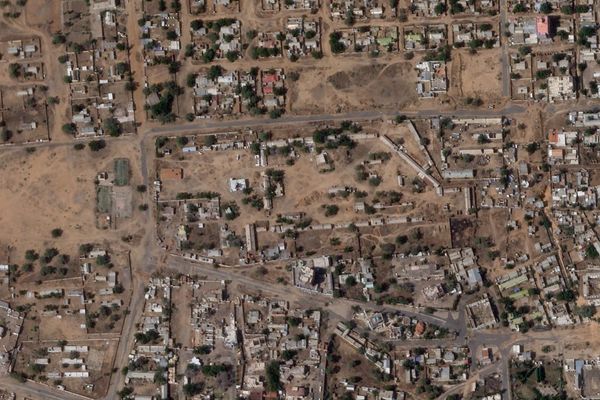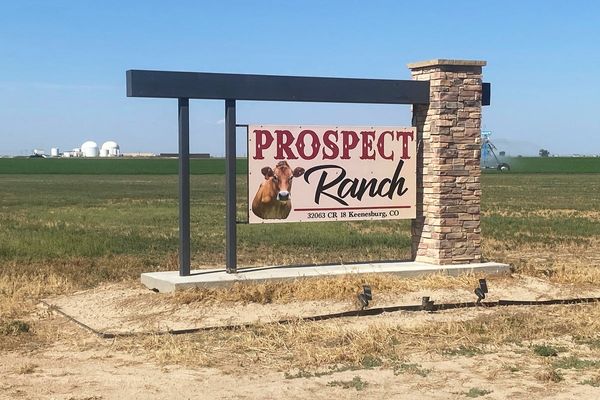August 21, 1986, was a busy market day in the village of Lower Nyos and that evening most people went to bed early. The next morning some 1,700 people and 3,000 domestic animals were discovered lying dead on the ground. Nobody could explain what happened as no injuries could be seen on the corpses. Rumors of “secret government experiments,” strange “invisible superweapons” or even a series of “atomic explosions” soon started to circulate.
Only later the true killer was identified as a strange and rare volcanic phenomenon, associated with the nearby lake of Nyos.

Lake Nyos is located along the Cameroon Volcanic Line (CVL), a 950-mile long chain of volcanoes and volcanic crater lakes extending from the Gulf of Guinea into Cameroon and Nigeria. The origin of the CVL is still not completely understood. It is possible that during the breakup of Africa from South America some 150 million years ago a third rift started to develop, but failed to become an oceanic basin like the Atlantic Ocean. Today the only active volcano of the CVL is Mt. Cameroon. However, there is still a large magma chamber to be found in a depth of 50 miles under the CVL. From this magma chamber large quantities of gases are released. Following faults the gases flow into the crater lakes or maar lakes, as collapsed volcanic craters filled by water are correctly called

Lake Nyos, like other thirty lakes of volcanic origin found in the region, is very deep (more than 650ft) and surrounded by steep cliffs. In the tropical climate of Cameroon, the warm superficial water layer will form a sort of cap covering the entire lake. This prevents mixing with colder water from the bottom of the lake. Volcanic gases, like sulfur- and carbon-dioxide, coming from the ground become more and more concentrated at the bottom of the lake.
Geologists are still not sure why the cap of warm water, holding the gases on the bottom of the lake, failed that night. Perhaps an earthquake or volcanic eruption on the bottom of the lake disrupted the water stratification. A rumbling noise reportedly was heard from the vicinity of Lake Nyos just before the catastrophe. Perhaps rain disrupted the water stratification or caused one or more landslides to fall into the lake.
The gas-rich water from the bottom reached the surface and an explosive degassing of 1.6 million tons of carbon-dioxide occurred, forming a 160 ft high cloud. The invisible, odorless carbon-dioxide cloud, with a density higher than the surrounding air, traveled as far as 15 miles from the lake into the surrounding valleys.
At a concentration of 6 to 8 percent (the normal concentration in Earth’s atmosphere is 0.04%) carbon-dioxide can lead to almost immediately unconsciousness and death. Some survivors later reported a strange smell (from the sulfuric gases), a white-translucent cloud and family members who suddenly and without apparent cause collapsed.
It is curious to note that folktales helped to discover the mechanism that caused the catastrophe and also suggest that this was not the first time Lake Nyos killed. According to tales of magical springs found in the region, as soon as a small animal, like a toad or bird, approaches the spring they will drop dead, as happened at Nyos. Geologists discovered that the supposed haunted springs are hot springs with a very high concentration of volcanic gases. It seemed reasonable that at the bottom of Lake Nyos similar springs exist, releasing large quantities of toxic gases into the lake. Other local folktales include haunted lakes, that will explode or drown people. Maybe such old stories about killer lakes are based on past disasters similar to what happened in 1986. As people didn’t know of the volcanic origin of the lakes, they attributed the lake’s misbehavior to supernatural powers, like gods, spirits or enraged ancestors. For a long time the shores of Lake Nyos were considered haunted and taboo. Only later people, ignoring the local traditions and taboos, settled there.
Lakes like Nyos are not common as they need some very specific conditions to form. The lake must be located in a tropical climate, where water temperatures remain constant all the year. The lake must be of volcanic or tectonic origin to be deep enough. The lake must be located where volcanic gases flow from the ground or hot springs occur. Long phases of rest, where gases become dissolved in the water, must be interrupted by sudden events, like earthquakes or landslides. These particular conditions are found in just two other African lakes. August 15, 1984, an explosion, probably caused by a sudden gas escape, killed 37 people at Lake Monoun, also located in Cameroon. The shores of Lake Kivu, located at the border of Rwanda and Congo, are densely populated. The concentration of carbon-dioxide measured in Lake Kivu, of volcanic and bacterial origin, is also extraordinarily high.
To prevent future catastrophic events, degassing pipes were installed in Lake Nyos and Lake Monoun. However, this solution works only for smaller lakes and Lake Kivu, with its gas concentration slowly rising, is still considered by many experts a ticking time bomb.
Interested in reading more? Try:
KROONENBERG, S. (2013): Why Hell Stinks of Sulfur: Mythology and Geology of the Underworld. University of Chicago Press: 352
LOCKWOOD, J.P. & HAZLETT, R.W. (2010): Volcanoes – Global Perspectives. Wiley-Blackwell Press: 539







